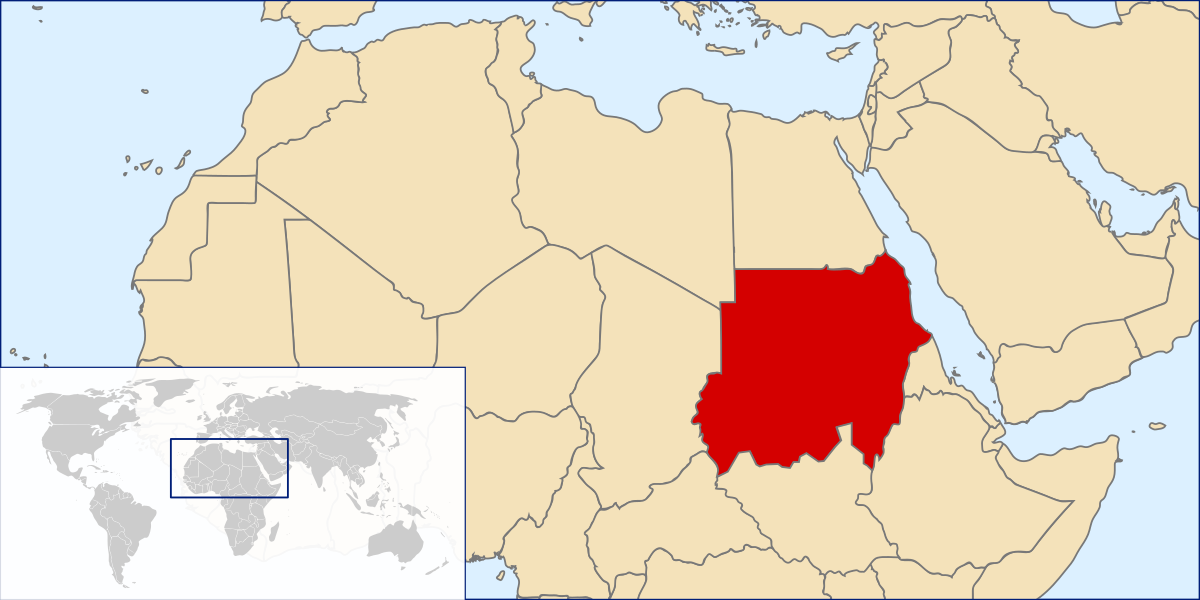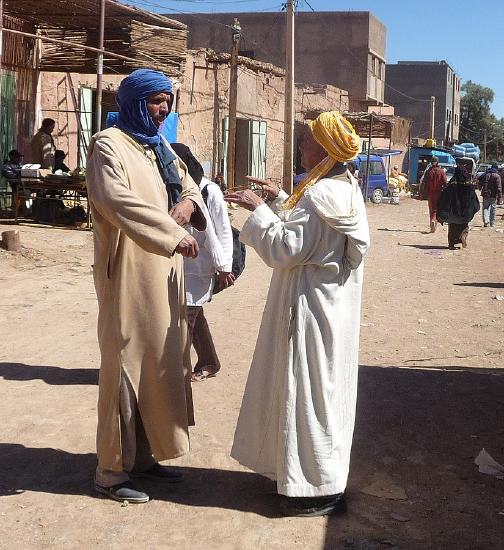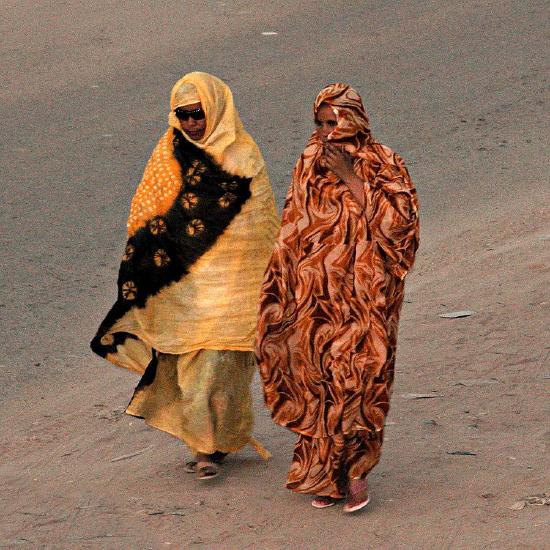11.8: Sudan
- Page ID
- 251284
\( \newcommand{\vecs}[1]{\overset { \scriptstyle \rightharpoonup} {\mathbf{#1}} } \)
\( \newcommand{\vecd}[1]{\overset{-\!-\!\rightharpoonup}{\vphantom{a}\smash {#1}}} \)
\( \newcommand{\dsum}{\displaystyle\sum\limits} \)
\( \newcommand{\dint}{\displaystyle\int\limits} \)
\( \newcommand{\dlim}{\displaystyle\lim\limits} \)
\( \newcommand{\id}{\mathrm{id}}\) \( \newcommand{\Span}{\mathrm{span}}\)
( \newcommand{\kernel}{\mathrm{null}\,}\) \( \newcommand{\range}{\mathrm{range}\,}\)
\( \newcommand{\RealPart}{\mathrm{Re}}\) \( \newcommand{\ImaginaryPart}{\mathrm{Im}}\)
\( \newcommand{\Argument}{\mathrm{Arg}}\) \( \newcommand{\norm}[1]{\| #1 \|}\)
\( \newcommand{\inner}[2]{\langle #1, #2 \rangle}\)
\( \newcommand{\Span}{\mathrm{span}}\)
\( \newcommand{\id}{\mathrm{id}}\)
\( \newcommand{\Span}{\mathrm{span}}\)
\( \newcommand{\kernel}{\mathrm{null}\,}\)
\( \newcommand{\range}{\mathrm{range}\,}\)
\( \newcommand{\RealPart}{\mathrm{Re}}\)
\( \newcommand{\ImaginaryPart}{\mathrm{Im}}\)
\( \newcommand{\Argument}{\mathrm{Arg}}\)
\( \newcommand{\norm}[1]{\| #1 \|}\)
\( \newcommand{\inner}[2]{\langle #1, #2 \rangle}\)
\( \newcommand{\Span}{\mathrm{span}}\) \( \newcommand{\AA}{\unicode[.8,0]{x212B}}\)
\( \newcommand{\vectorA}[1]{\vec{#1}} % arrow\)
\( \newcommand{\vectorAt}[1]{\vec{\text{#1}}} % arrow\)
\( \newcommand{\vectorB}[1]{\overset { \scriptstyle \rightharpoonup} {\mathbf{#1}} } \)
\( \newcommand{\vectorC}[1]{\textbf{#1}} \)
\( \newcommand{\vectorD}[1]{\overrightarrow{#1}} \)
\( \newcommand{\vectorDt}[1]{\overrightarrow{\text{#1}}} \)
\( \newcommand{\vectE}[1]{\overset{-\!-\!\rightharpoonup}{\vphantom{a}\smash{\mathbf {#1}}}} \)
\( \newcommand{\vecs}[1]{\overset { \scriptstyle \rightharpoonup} {\mathbf{#1}} } \)
\(\newcommand{\longvect}{\overrightarrow}\)
\( \newcommand{\vecd}[1]{\overset{-\!-\!\rightharpoonup}{\vphantom{a}\smash {#1}}} \)
\(\newcommand{\avec}{\mathbf a}\) \(\newcommand{\bvec}{\mathbf b}\) \(\newcommand{\cvec}{\mathbf c}\) \(\newcommand{\dvec}{\mathbf d}\) \(\newcommand{\dtil}{\widetilde{\mathbf d}}\) \(\newcommand{\evec}{\mathbf e}\) \(\newcommand{\fvec}{\mathbf f}\) \(\newcommand{\nvec}{\mathbf n}\) \(\newcommand{\pvec}{\mathbf p}\) \(\newcommand{\qvec}{\mathbf q}\) \(\newcommand{\svec}{\mathbf s}\) \(\newcommand{\tvec}{\mathbf t}\) \(\newcommand{\uvec}{\mathbf u}\) \(\newcommand{\vvec}{\mathbf v}\) \(\newcommand{\wvec}{\mathbf w}\) \(\newcommand{\xvec}{\mathbf x}\) \(\newcommand{\yvec}{\mathbf y}\) \(\newcommand{\zvec}{\mathbf z}\) \(\newcommand{\rvec}{\mathbf r}\) \(\newcommand{\mvec}{\mathbf m}\) \(\newcommand{\zerovec}{\mathbf 0}\) \(\newcommand{\onevec}{\mathbf 1}\) \(\newcommand{\real}{\mathbb R}\) \(\newcommand{\twovec}[2]{\left[\begin{array}{r}#1 \\ #2 \end{array}\right]}\) \(\newcommand{\ctwovec}[2]{\left[\begin{array}{c}#1 \\ #2 \end{array}\right]}\) \(\newcommand{\threevec}[3]{\left[\begin{array}{r}#1 \\ #2 \\ #3 \end{array}\right]}\) \(\newcommand{\cthreevec}[3]{\left[\begin{array}{c}#1 \\ #2 \\ #3 \end{array}\right]}\) \(\newcommand{\fourvec}[4]{\left[\begin{array}{r}#1 \\ #2 \\ #3 \\ #4 \end{array}\right]}\) \(\newcommand{\cfourvec}[4]{\left[\begin{array}{c}#1 \\ #2 \\ #3 \\ #4 \end{array}\right]}\) \(\newcommand{\fivevec}[5]{\left[\begin{array}{r}#1 \\ #2 \\ #3 \\ #4 \\ #5 \\ \end{array}\right]}\) \(\newcommand{\cfivevec}[5]{\left[\begin{array}{c}#1 \\ #2 \\ #3 \\ #4 \\ #5 \\ \end{array}\right]}\) \(\newcommand{\mattwo}[4]{\left[\begin{array}{rr}#1 \amp #2 \\ #3 \amp #4 \\ \end{array}\right]}\) \(\newcommand{\laspan}[1]{\text{Span}\{#1\}}\) \(\newcommand{\bcal}{\cal B}\) \(\newcommand{\ccal}{\cal C}\) \(\newcommand{\scal}{\cal S}\) \(\newcommand{\wcal}{\cal W}\) \(\newcommand{\ecal}{\cal E}\) \(\newcommand{\coords}[2]{\left\{#1\right\}_{#2}}\) \(\newcommand{\gray}[1]{\color{gray}{#1}}\) \(\newcommand{\lgray}[1]{\color{lightgray}{#1}}\) \(\newcommand{\rank}{\operatorname{rank}}\) \(\newcommand{\row}{\text{Row}}\) \(\newcommand{\col}{\text{Col}}\) \(\renewcommand{\row}{\text{Row}}\) \(\newcommand{\nul}{\text{Nul}}\) \(\newcommand{\var}{\text{Var}}\) \(\newcommand{\corr}{\text{corr}}\) \(\newcommand{\len}[1]{\left|#1\right|}\) \(\newcommand{\bbar}{\overline{\bvec}}\) \(\newcommand{\bhat}{\widehat{\bvec}}\) \(\newcommand{\bperp}{\bvec^\perp}\) \(\newcommand{\xhat}{\widehat{\xvec}}\) \(\newcommand{\vhat}{\widehat{\vvec}}\) \(\newcommand{\uhat}{\widehat{\uvec}}\) \(\newcommand{\what}{\widehat{\wvec}}\) \(\newcommand{\Sighat}{\widehat{\Sigma}}\) \(\newcommand{\lt}{<}\) \(\newcommand{\gt}{>}\) \(\newcommand{\amp}{&}\) \(\definecolor{fillinmathshade}{gray}{0.9}\)In this section, you will be able to:
- Learn about Sudan, its Geographic location, famous cities, most famous artifacts, and traditional food and clothes.
Facts to know about Sudan:
- Official Name: Republic of the Sudan - جمهورية السودان
- Capital: Khartoum
- Population: 47,958,856[ ( 2022 estimate)
- Currency: The Sudanese pound - الجنيه السوداني
- Continent: Africa - أفريقيا
- Official Lagrange: Modern Standard Arabic -اللغة العربية الفصحى الحديثة- allughat alearabiat alfushaa alhaditha

Geographical Location and Flag:
Sudan is the third-largest country in Africa, located in the northeastern part of the continent. It shares borders with seven countries: Egypt to the north, Libya to the northwest, Chad to the west, the Central African Republic to the southwest, South Sudan to the south, Ethiopia to the southeast, and Eritrea to the east. The northeastern border of Sudan is lined by the Red Sea, giving the country access to important maritime trade routes. Sudan's diverse geography includes the Nubian Desert in the north, fertile lands along the Nile River, and mountainous regions in the east and west. Sudan was the largest country in Africa before South Sudan gained independence in 2011; now Algeria holds that title.
The Nile River, which is central to Sudan’s geography, flows from south to north through the country, providing vital water resources for agriculture and sustaining the livelihoods of many Sudanese people. The Blue Nile and White Nile merge in the capital city of Khartoum, creating one of the world’s most significant river systems.
The flag of Sudan is a tricolor with three horizontal stripes: red on the top, white in the middle, and black on the bottom, with a green triangle based at the hoist side. The red stripe symbolizes the struggle for independence and the sacrifices made by the people, as well as Sudan's links to other Arab nations. The white stripe represents peace, light, and optimism, while the black stripe stands for Sudan's identity as a nation of African heritage. The green triangle represents Islam, which is the dominant religion in Sudan, as well as agriculture, which is a crucial part of the country’s economy.
The flag, adopted on May 20, 1970, reflects Sudan’s rich history, diverse culture, and the aspirations of its people for unity, peace, and prosperity.

Famous Cities in Sudan
Sudan, a country with a rich cultural heritage and diverse geography, is home to several cities that play significant roles in the nation’s history, economy, and culture. Each city offers a unique glimpse into Sudan's past and present, showcasing its importance in various aspects of Sudanese life.
- الخرطوم Khartoum, the capital and largest city of Sudan, is situated at the confluence of the Blue Nile and White Nile rivers. This strategic location has made Khartoum a vital center for trade, commerce, and administration. The city is known for its modern infrastructure, educational institutions, and cultural landmarks. The University of Khartoum, one of the oldest and most prestigious universities in Africa, is located here. Khartoum is also home to the National Museum of Sudan, which houses a vast collection of artifacts that reflect the country’s rich history. The city's blend of modernity and tradition, along with its diverse population, makes Khartoum the cultural and economic hub of Sudan.
- أم درمان Omdurman, located directly across the Nile from Khartoum, is Sudan’s largest city by population and is often considered the cultural heart of the nation. It is known for its historical significance as the site of the 1885 Battle of Omdurman, where the Mahdist forces defeated the British. The city is home to the tomb of the Mahdi, the leader of the Mahdist revolution, which remains a significant religious and historical site. Omdurman is also famous for its vibrant markets, particularly the Omdurman Souq, one of the largest and most bustling markets in Sudan, where one can find traditional crafts, spices, and textiles.
- بورتسودان Port Sudan, located on the northeastern coast along the Red Sea, is Sudan’s main seaport and a key gateway for international trade. The city is crucial for the country’s economy, handling the majority of Sudan's imports and exports, including oil, which is a significant part of the economy. Port Sudan is also a popular destination for diving and snorkeling enthusiasts due to its proximity to some of the most beautiful coral reefs in the Red Sea. The city’s infrastructure has been expanding rapidly, making it an important commercial and industrial center.
- كسلا Kassala, located near the border with Eritrea in eastern Sudan, is known for its stunning natural scenery and cultural diversity. The city is surrounded by the picturesque Taka Mountains, which provide a dramatic backdrop to the area. Kassala is a melting pot of various ethnic groups, including the Beja people, who have lived in the region for centuries. The city’s market is famous for its handicrafts, traditional clothing, and locally grown fruits. Kassala is also known for its religious significance, as it is home to the tomb of Sheikh Al-Makki, a revered Sufi leader.
- الأبيض El Obeid, the capital of North Kordofan state, is located in central Sudan and is an important agricultural and trading center. The city is known for its production of gum arabic, an essential export product for Sudan, as well as its livestock markets. El Obeid is also a hub for traditional Sudanese music and dance, particularly the vibrant Kordofanian cultural traditions. The city has a rich history and has been a center of Islamic learning for many years.
- نايالا Nyala, the capital of South Darfur, is one of the largest cities in western Sudan. It serves as a major center for trade and agriculture in the region. Nyala is particularly known for its agricultural products, including peanuts, sorghum, and millet, which are essential to the local economy. The city has faced challenges due to conflicts in the Darfur region, but it remains a vital economic and cultural center. Nyala's markets are famous for traditional Darfuri crafts and goods, and the city plays a crucial role in connecting the remote areas of Darfur with the rest of Sudan.
- دنقلا Dongola, located in northern Sudan along the Nile River, is one of the oldest cities in the country. It is the capital of the Northern State and is historically significant as a center of the ancient Nubian kingdom of Makuria. The city is known for its archaeological sites, including ancient temples, pyramids, and fortresses. Dongola is also an important agricultural region, benefiting from the fertile lands along the Nile, where dates, wheat, and vegetables are cultivated.
Each of these cities contributes to the diverse cultural and economic landscape of Sudan, reflecting the country’s rich history, geographic diversity, and the resilience of its people. Whether through historical significance, economic importance, or cultural richness, these cities offer a unique insight into Sudan's identity and heritage.
Traditional Food
Sudanese cuisine is a reflection of the country’s diverse cultural influences, incorporating elements from Arab, African, and Middle Eastern traditions. The food in Sudan is characterized by its use of simple, hearty ingredients, often seasoned with a variety of spices to create rich and flavorful dishes. Here are some of the most famous and traditional foods in Sudan:
- Ful Medames is a popular breakfast dish in Sudan, made from fava beans that are slow-cooked and mashed. The beans are typically flavored with garlic, lemon juice, olive oil, and spices, and served with flatbread. It is often garnished with fresh vegetables, onions, and boiled eggs. Ful Medames is a staple in many Sudanese households, providing a nutritious and filling start to the day.
- Kisra is a traditional Sudanese flatbread made from fermented sorghum or wheat flour. It is a staple food in Sudan, often served with stews or as a side dish. Kisra has a slightly sour taste due to the fermentation process and is similar in texture to a thin pancake or crepe. It is commonly used to scoop up food and is an essential part of Sudanese meals.
- Asida is a traditional Sudanese dish made from wheat or sorghum flour that is cooked into a dough-like consistency. It is often served with a savory sauce, such as mulah (a meat or vegetable stew), or with a sweet topping like honey or date syrup. Asida is a popular dish during religious festivals and family gatherings, and it is typically eaten with the hands.
- Mulah is a term used to describe various types of Sudanese stews, which are often served with kisra or asida. These stews can be made with a variety of ingredients, including meat, vegetables, and legumes. Common types of mulah include mulah bamya (okra stew) and mulah rob (a yogurt-based stew). The stews are typically seasoned with a blend of spices, giving them a rich and flavorful taste.
- Gurasa is a type of bread that resembles a thick pancake and is commonly served as a base for other dishes. It is made from wheat flour and is often topped with meat, vegetables, or stew. Gurasa is a versatile dish that can be eaten for breakfast, lunch, or dinner, and it is a popular street food in Sudan.
- Dama is a slow-cooked meat stew that is rich in flavor and often served with bread or rice. The stew is typically made with lamb or beef, cooked with tomatoes, onions, and a blend of spices such as cumin, coriander, and cinnamon. Dama is a comforting and hearty dish that is commonly enjoyed during family meals and special occasions.
- Baid Hanoot, also known as spiced eggs, is a popular snack or side dish in Sudan. The eggs are boiled and then coated with a mixture of spices, including cumin, coriander, and chili powder. They are often served with bread and make for a flavorful and satisfying bite.
- Tamia, also known as Sudanese falafel, is made from ground chickpeas or fava beans mixed with garlic, onions, and spices. The mixture is formed into balls and deep-fried until crispy. Tamia is typically served in pita bread with salad and tahini sauce, and it is a popular street food in Sudan.
- Hilba is a traditional Sudanese dessert made from fenugreek seeds, which are soaked and then mixed with sugar and spices to create a sweet, thick pudding. It is often served during special occasions and is loved for its unique flavor and texture.
Sudanese cuisine is not only delicious but also deeply rooted in the country’s cultural heritage. These traditional foods are enjoyed by people of all backgrounds in Sudan and play an important role in bringing families and communities together during meals and celebrations.

Traditional Clothing in Sudan
Sudanese traditional clothing reflects the country's rich cultural diversity, with various ethnic groups and regions having their own distinct styles. These garments are not only functional, designed to suit the hot and arid climate of Sudan, but they also carry deep cultural significance and are often worn during special occasions, ceremonies, and everyday life.
For Men
- Jalabiya: The most common traditional attire for Sudanese men is the Jalabiya, a long, loose-fitting robe that typically reaches down to the ankles. The Jalabiya is usually made from light cotton or linen, making it ideal for the hot climate. It is traditionally white, although other light colors such as beige or gray are also worn. The simplicity of the Jalabiya allows for comfort and ease of movement, which is essential in Sudan's warm weather.
- Turban: Along with the Jalabiya, men often wear a Turban (known locally as an Immah). The turban is a long piece of cloth wrapped around the head, serving both as a protection from the sun and as a cultural symbol. The way a turban is wrapped can vary by region and personal preference, and it often complements the Jalabiya.
- Sandal: Traditional leather sandals, known as Markoob, are typically worn with the Jalabiya. These sandals are durable and comfortable, suitable for walking long distances in the hot climate.
For Women
- Thobe: The Thobe (also spelled Toub) is the traditional attire for Sudanese women, particularly in the northern and central regions. It is a large, flowing piece of fabric, usually about four meters long, that is wrapped around the body and draped over the shoulders. The Thobe covers the entire body, providing modesty and protection from the sun. It comes in a variety of colors and patterns, ranging from simple, solid colors for everyday wear to brightly colored or elaborately patterned designs for special occasions like weddings and celebrations.
- Headscarf: Women also typically wear a Headscarf or Hijab to cover their hair, which is often coordinated with the Thobe. The headscarf is an essential part of the traditional dress, reflecting cultural and religious values.
- Jewelry: Sudanese women often adorn themselves with traditional jewelry, particularly gold necklaces, bracelets, and earrings. Jewelry is an important part of a woman’s attire, especially during weddings and festive occasions, symbolizing beauty, wealth, and status.
Regional Variations
In addition to these common garments, Sudanese traditional clothing varies significantly across different regions and ethnic groups. For example, in the Darfur and Kordofan regions, men and women may wear more colorful and intricately designed clothing, reflecting the cultural heritage of the local communities. Similarly, in eastern Sudan, the Beja people have their own distinct style of dress, with men wearing brightly colored wraps called Zayrah and women donning colorful headscarves and jewelry.
Modern Adaptations
While traditional clothing remains important in Sudanese culture, modern influences have also led to adaptations in style. Many Sudanese now incorporate elements of Western fashion into their traditional attire, particularly in urban areas. However, traditional garments like the Jalabiya and Thobe continue to be worn widely, especially during religious holidays, weddings, and other cultural events.
In summary, Sudanese traditional clothing is a vibrant expression of the country’s cultural identity, reflecting its diverse heritage, values, and way of life. Whether through the elegant drape of a woman’s Thobe or the simplicity of a man’s Jalabiya, these garments are an integral part of Sudanese society, embodying both tradition and beauty.



Conclusion
Sudan is a country rich in cultural diversity, history, and tradition, where the blend of African and Arab influences is reflected in every aspect of life, from its traditional clothing and cuisine to its vibrant cities and landscapes. Despite challenges, Sudan remains a land of resilience and warmth, where deep-rooted customs coexist with a growing drive towards modernization. The nation’s cultural heritage, natural beauty, and the enduring spirit of its people make Sudan a unique and fascinating place within the African continent.
Activities
You posted on your social media about your summer trip to Sudan. Share with your followers the famous cities, capital, historical places, famous dishes, what you liked and did not like, and the weather.

